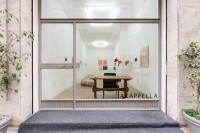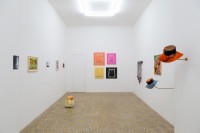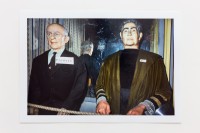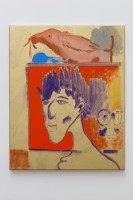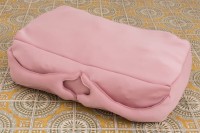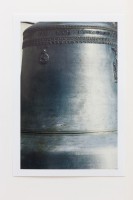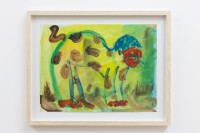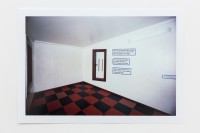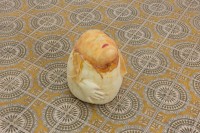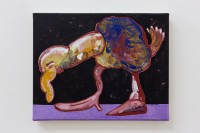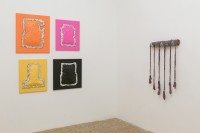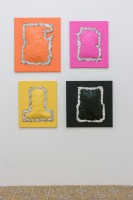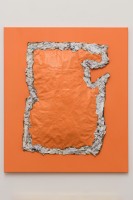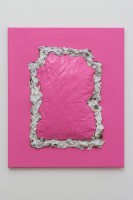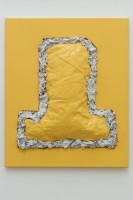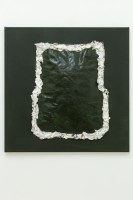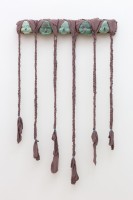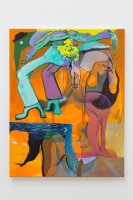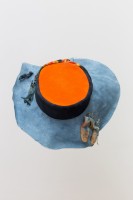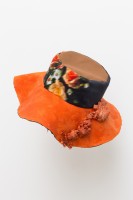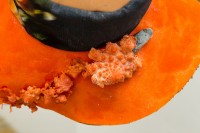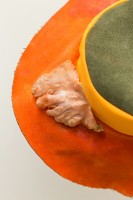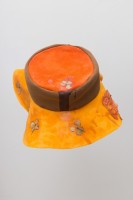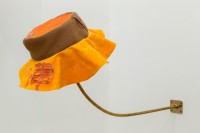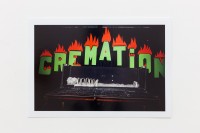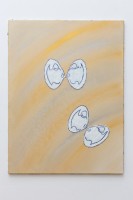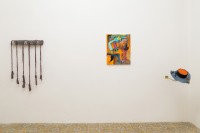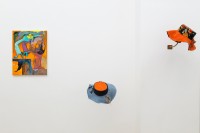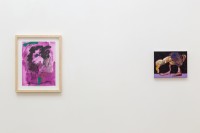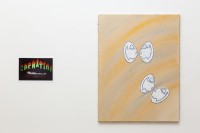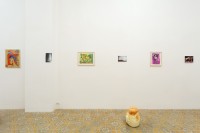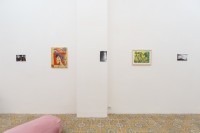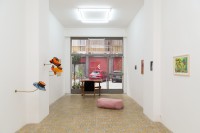Daphne Ahlers, Vittorio Brodmann,
Daniel Faust, Lilli Thießen
SOLO COSE BELLE
curated by Tenzing Barshee
28 Aprile 2017 – 10 Luglio 2017
My mouth was black and open. I was afraid that the half-sentence, I had just spoken, would fly like a boomerang, right back between my lips. (…) The idea was somehow seismological, abstract and emotional, but also concrete because we were spending our month in Pozzuoli, walking the Phlegraean Fields, near Naples, sitting on a collapsed caldera, near the Solfatara, a site known for its fumaroles: steaming, sulphuric breaths. “It’s the Earth exhaling,” he had explained, paternalistically adding a “you know” at the end of every one of his silly little sentences. – April 2017, Pozzuoli.
The legend speaks of the dead body of a young woman that was found in the river Seine around 1880 and it is believed that she committed suicide. Because she remained anonymous, her face was turned into a putative death mask, so that someone might recognize her. In search of her identity, her face became an image and was made public. To this day, this image became something like a centuries-old meme that was reproduced, idealized and distributed. Her smile was compared to that of the Mona Lisa. “L'Inconnue de la Seine” became popular as an image because it was deemed beautiful. Over time, her unknown fate was the image that became stylized, misconstrued and subject to a great variety of literary and other projections. These projections originated mostly from male perspectives. In the United States, the mask is also known as "La Belle Italienne”. Simply, because she was immersed in an image of beauty, soaking her over and over again. For her sculpture “Never Let Jealousy Threaten Female Bonds”, Daphne Ahlers used the mask of the unknown woman from the Seine to address different issues. She cast the mask in latex five times, colored in seaweed green and bound together by long braids of nylon-made hair, which themselves suggest the passing of time as it takes awhile for hair to grow that far down. Even though the image of the unknown woman from the Seine was reduced to an image that was alienated from her actual face as many times as her story must have been misinterpreted—which made her vanish all over again—, she was also never released, as the artist points out, and if she really committed suicide, she made the conscious decision to disappear, which suggests that she wanted to be let go but, for centuries, no one ever would.
Bringing together the works of its four artists, this exhibition raises the question of beauty or the use of beautiful things with a smile and a rivel, causing anxiety and comfort alike. For example, when Lilli Thießen uses natural materials, referring to geographic locations and historic events, for visual purposes, sometimes bordering on the decorative. She takes the colors for her abstract compositions from sea shells or uses sand to frame a painting, materials which she collected on beaches in the US and in Normandy. How we can reconsider what’s already been historicized when Daniel Faust reframes obscure museum objects and questions, what we put on display and for what purpose. Or when Vittorio Brodmann considers that painting has past the point of having to address beauty, simply, because the question has become an intrinsic aspect of the medium itself.
– Tenzing Barshee
*exhibition in collaboration with Spazio Artisti, artists residency in Pozzuoli
Mousse
Art Viewer
Artribune
CURA.
KubaParis
